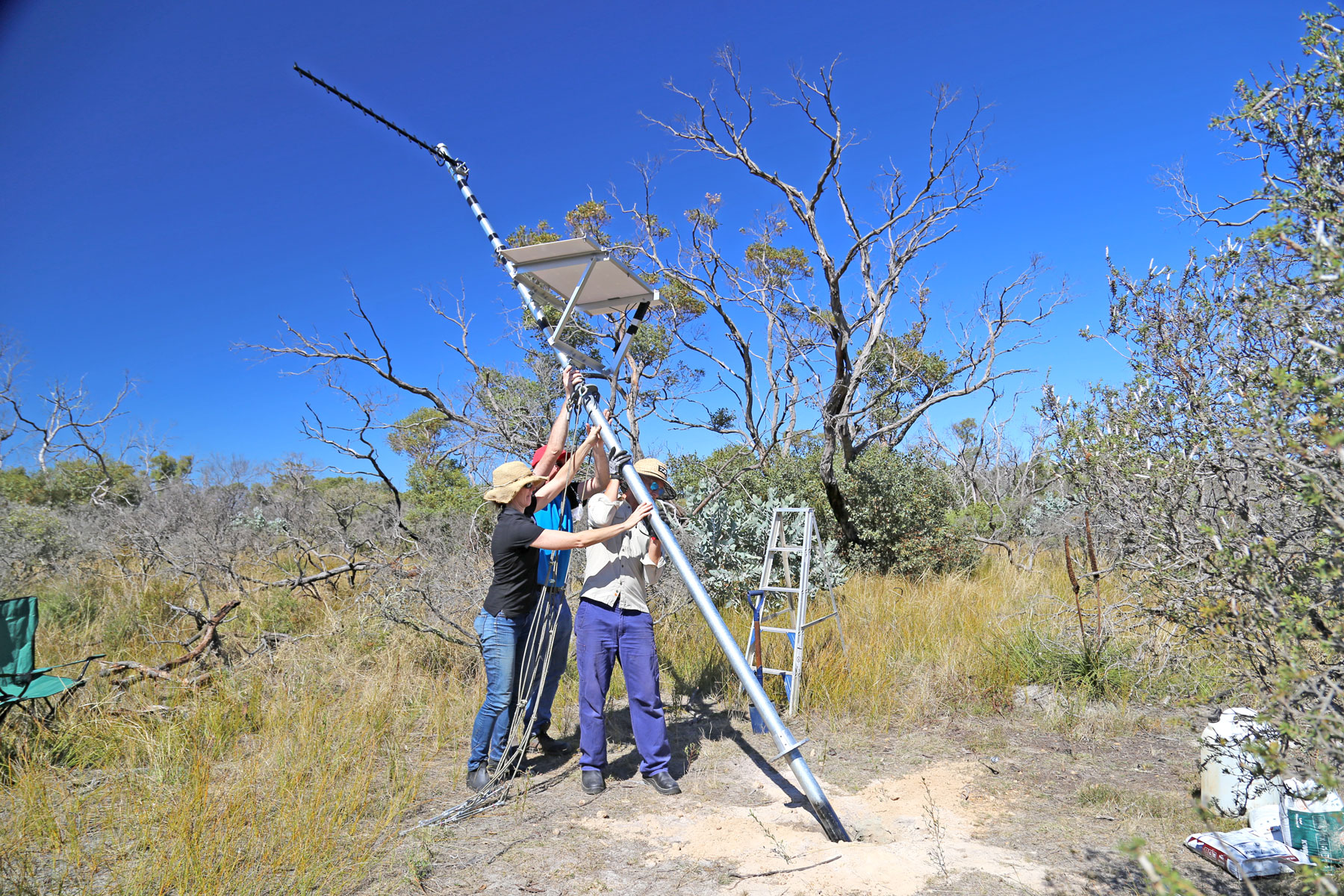
Automated acoustic technology that identifies calls from a pest bird, the European starling, has proven its potential as a new tool to enhance control measures for the exotic bird, as well as other invasive pests.
The Department of Primary Industries and Regional Development (DPIRD) recently completed a three year research project on the South Coast, sponsored by the Centre for Invasive Species Solutions (CISS).
Project lead, DPIRD research scientist Susan Campbell said the fully automated, solar powered, remote system could detect the ‘buzz’ and ‘whistle’ calls of starlings with great accuracy.
Dr Campbell said the acoustic surveillance technology could provide an early detection system for pest surveillance in remote locations, as well as inform control and management strategies.
“Two towers equipped with an acoustic surveillance, detection and communication device were erected at the eastern and western ends of a high risk starling incursion zone at Bremer Bay and Gibson earlier this year to test the technology,” she said.
“A machine learning algorithm was trained to detect the two starling call types with a high degree of accuracy. Any detections are sent remotely from the field over Telstra’s long range low bandwidth network for validation via an online interface.
“With no established infestations of starlings on the South Coast, the remote acoustic surveillance system was tested in South Australia, where there are known infestations, with really pleasing results.
“We further validated the technology on site in Western Australia using playback audio recordings of starlings.”
DPIRD is now considering the application of the technology, as part of its integrated pest management activities.
Dr Campbell said the project outcomes built on previous research co-funded by the Australian Bureau of Agricultural and Resource Economics and Sciences and would provide an innovative boost to DPIRD’s ongoing starling management program.
“It’s not about replacing our current on ground operational activities, rather enhancing temporal and spatial surveillance for starlings and providing near real time incursion information to help inform management responses,” she said.
“With the two proof of concept towers now operating successfully, more towers are required throughout high risk areas to provide a connected surveillance network.”
CISS Chief Executive Andreas Glanznig said automated acoustic technology had a bright future as a useful tool in invasive species management.
"This cutting edge technology has great potential to efficiently detect key bird and amphibian biosecurity threats, such as the Asian black-spined toad,” he said.
“There had already been interest from interstate and international program managers in this technology to enhance detection of other audible pests and native threatened species.”
Picture caption: DPIRD research scientist Dr Susan Campbell (left), David Lucas from IoT company Lynxemi and David Barnard, DKB Solutions install an acoustic detection tower for starlings at Bremer Bay, as part of a proof of concept research project.


